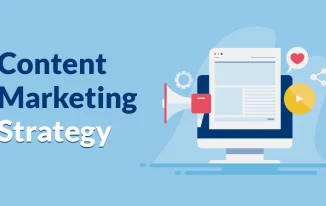An effective trade show is a hub for networking and innovation, and it offers sponsors a potent means of increasing brand recognition and obtaining worthwhile leads. But for these things to happen, it's critical to have a solid marketing plan and a thorough schedule that covers everything from initial preparation to follow-up after the event.
While many parts of trade show marketing remain largely unchanged from years past, the post-pandemic landscape presents some fresh opportunities and problems. The most prominent of them are the continued viability of hybrid and virtual event forms.
This must be taken into account in the marketing strategy. Trade exhibitions give you the chance to create enthusiasm before, during, and after the event about the brand and new goods or services.
Trade show marketing:
Trade show marketing refers to an event where businesses from a certain sector display and show off their newest goods and services. Only individuals who register, company officials, or members of the press are often allowed entry to trade exhibitions.
Trade exhibitions are really about doing business, despite all the hoopla. Companies go to trade exhibits to get fresh sales leads, close significant agreements, and communicate with other people in their sector.
Some of the core methods for effective trade show marketing:
Define Your Marketing Goals
Trade fairs are no exception to the rule that no marketing strategy can be expected to be successful without being supported by some well-thought-out goals.
Your goals should be unique to the kind of trade show you intend to attend and should not only be attainable but also measurable.
Businesses frequently visit trade exhibitions for a variety of purposes, including to increase sales, network with vendors, or create leads. One of the most typical objectives is direct selling, which is a good fit for many trade events.
Many sponsors take advantage of the chance to announce and showcase their most recent items because they know that the majority of trade show guests are interested in seeing new products being showcased for Trade Show Marketing Strategy.
Therefore, it makes sense to schedule the attendance around the introduction of new products. However, it's crucial that we create a marketing strategy around each of those objectives. For instance, we might want to make direct sales to attendees at the booth in addition to gathering high-value leads for later follow-up.
Identify the Best Trade Shows
Almost always, trade exhibitions are industry-specific. Some companies only serve the manufacturing industry, while others only concentrate on cutting-edge digital technology, and so on.
To get the most out of your investment, it's critical to pick the best trade fairs to attend. It's critical to have a good understanding of your ideal consumer before you begin marketing since you should concentrate on trade exhibits that are appropriate for your specific audience.
While some trade exhibitions are geared toward small firms, others are for multinational corporations. Google or the Trade Show News Network about Trade Show Marketing Strategy, which also lets you filter events by industry, can be used to locate trade exhibits all over the world. Once you've decided on a trade fair, register as soon as possible to maximise the chances of getting the booth you desire.
Create Marketing Timeline
A successful trade show preparation takes more than a few weeks, and if you begin marketing too soon, you risk missing out on opportunities.
For bigger events, it is essential to start preparing a year in advance and to begin creating buzz shortly after. You must create a timetable because trade show marketing starts long before the event and lasts long after it.
When publicising the attendance at the fair, this is very crucial. If you announce it too early, potential customers might forget about you, but if you reveal it too late, you won't have time to generate enough buzz.
It's critical to develop a multi-step plan that includes your announcements, email newsletter flow, social media posting, and other content publishing in order to reduce stress and increase the likelihood that your event will be a success.
Publish Engaging Content
Trade fairs have traditionally been quite successful in generating leads and facilitating direct sales, but it used to be very challenging to quantify their success.
All of that has changed in the age of beacons and smartphone applications for Trade Show Marketing Strategy, which provide in-person attendees more information while giving sponsors and event organisers the chance to gather insightful data about their audiences.
Utilizing these technologies and reaching your target consumers in novel ways before, during, and after the event is made possible by incorporating content marketing into your trade show marketing strategy.
To let current clients know about the impending trade fair, we can start an email marketing campaign. If your appearance there is related to the debut of a new product, this is also a fantastic chance to generate buzz.
Social media posts, blog entries, and slideshow presentations are other content types that have been successfully used to promote and create buzz around an event.
Such a content plan will not only entice visitors to your booth, but it will also boost website traffic, provide leads, and boost purchases from those who won't be at the tradeshow.
Scheduling Key Connections
Establishing the processes, corporate rules, and documentation criteria that will guide your project provides the foundation for a sound project schedule. The project's resources and potential unforeseen circumstances are listed in the schedule management plan.
Additionally, it includes a list of the project's stakeholders as well as a list of everyone who needs to approve the schedule and receive a copy.
This document also specifies who has the power to change the schedule, the procedure team members must follow to submit a change request, and a project communication strategy to inform the team of changes made throughout the project.
Follow up with Your Visitors
The most crucial marketing procedure of all is likely the follow-up after a trade show. However, skipping out on follow-up might cost you leads and sales. Because of the short attention spans and many distractions that exist today, it is simple for the individuals you meet at trade exhibits to forget about client.
Trade exhibitions offer significant chances to generate leads by getting people to stop by your booth and sign up for your email newsletter or trade business cards.
There are numerous strategies to follow up, such as sending attendees thank you emails, LinkedIn connection requests, and maintaining contact with them on additional social media channels.





